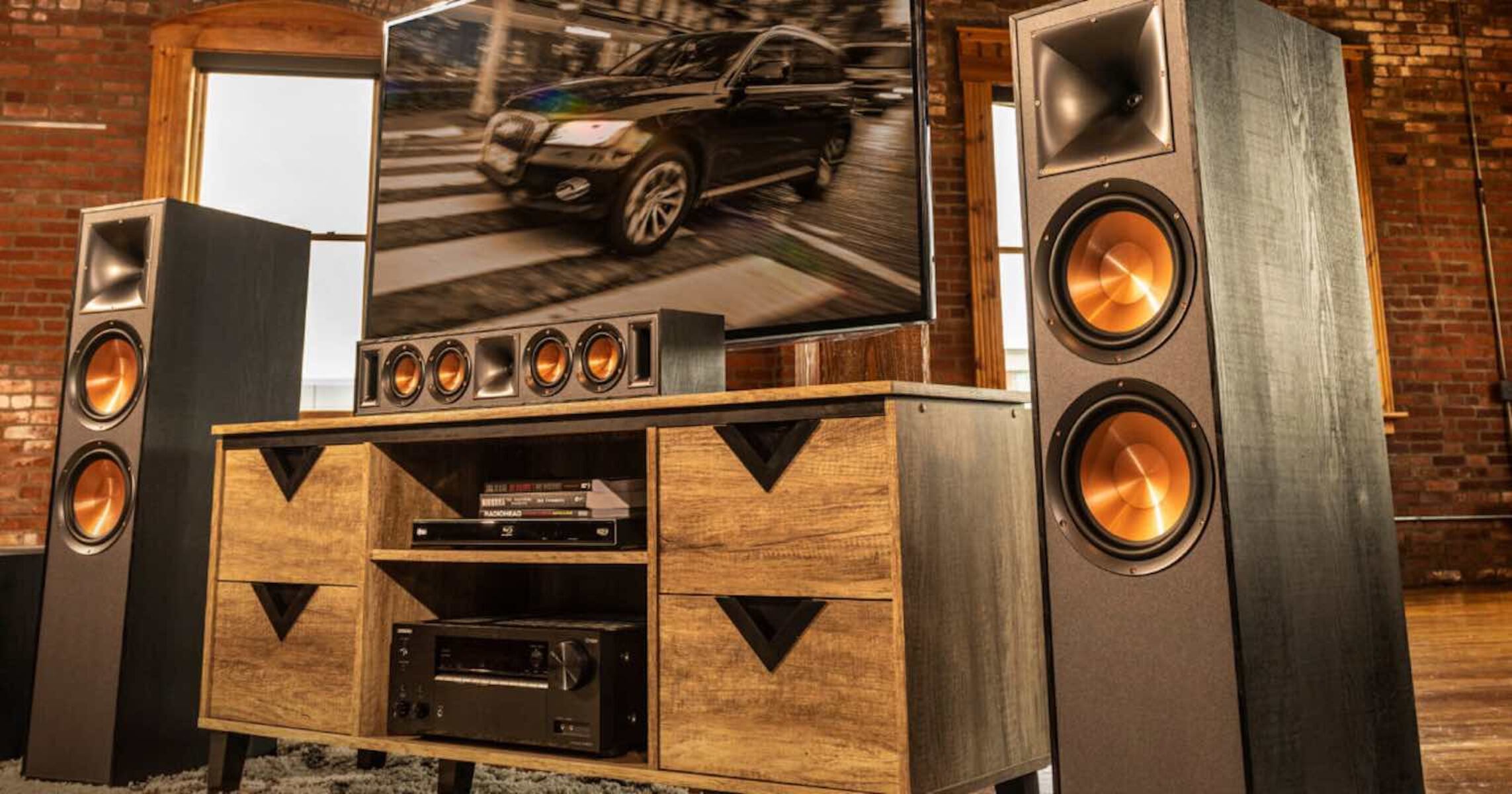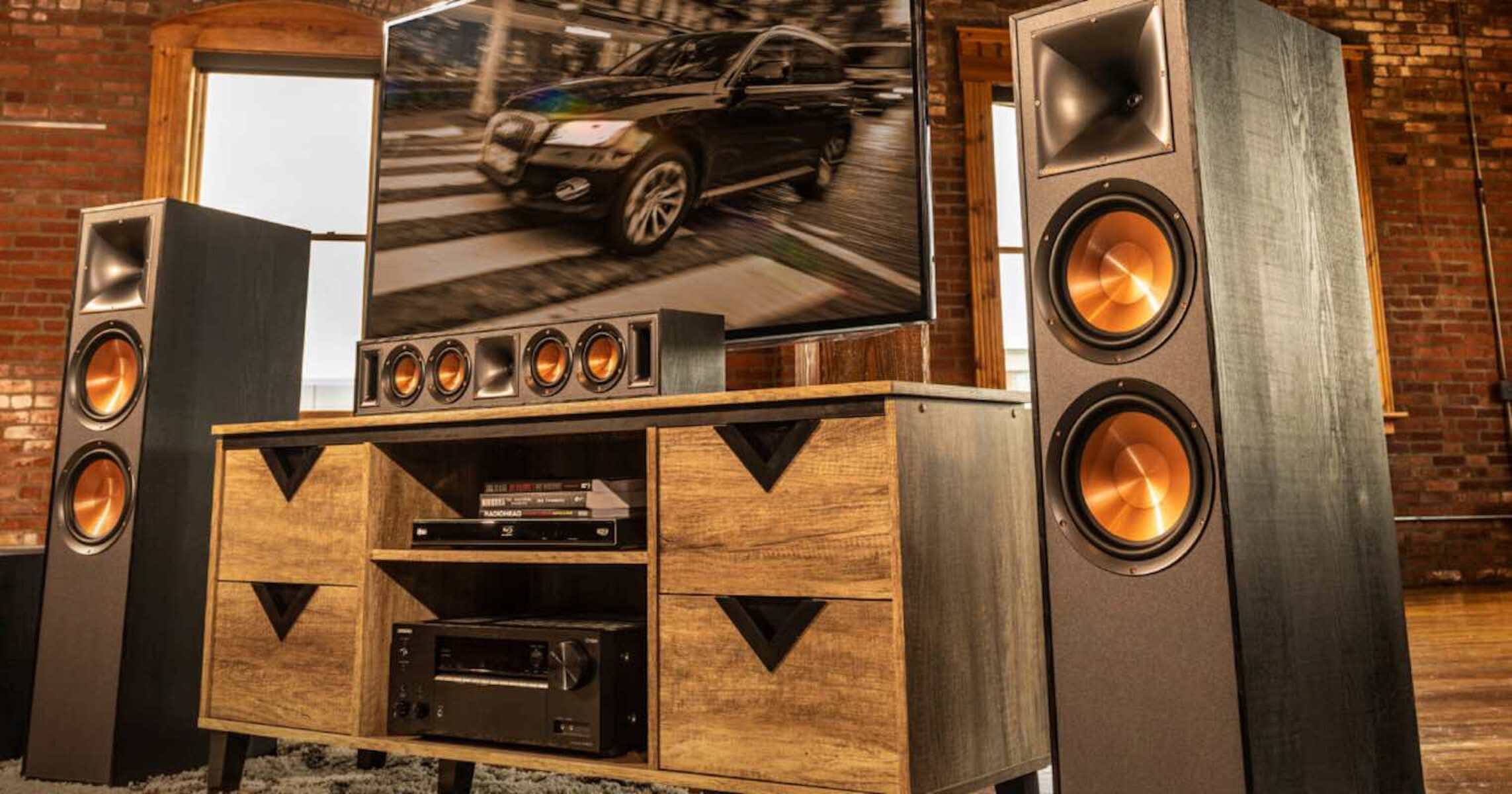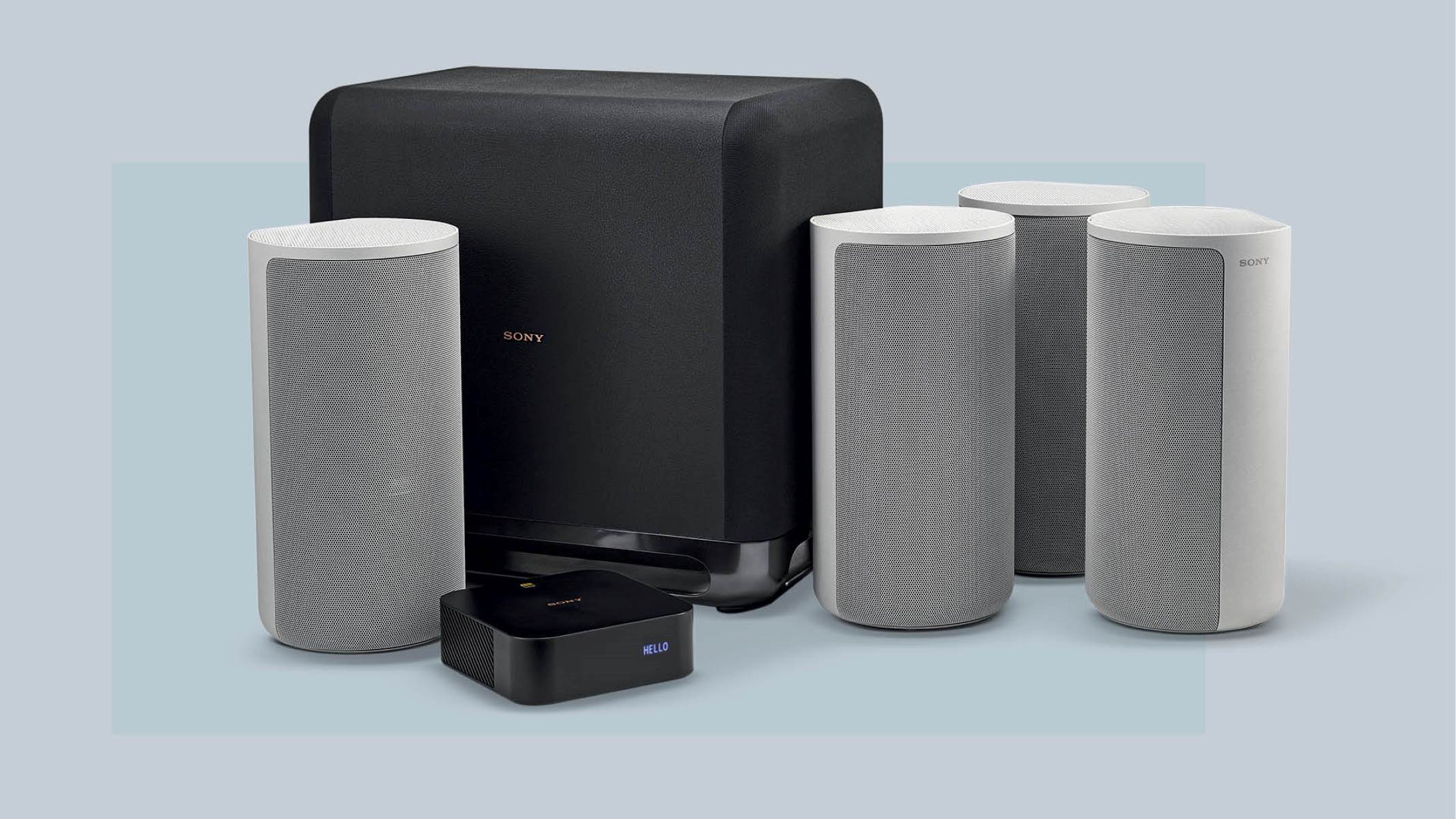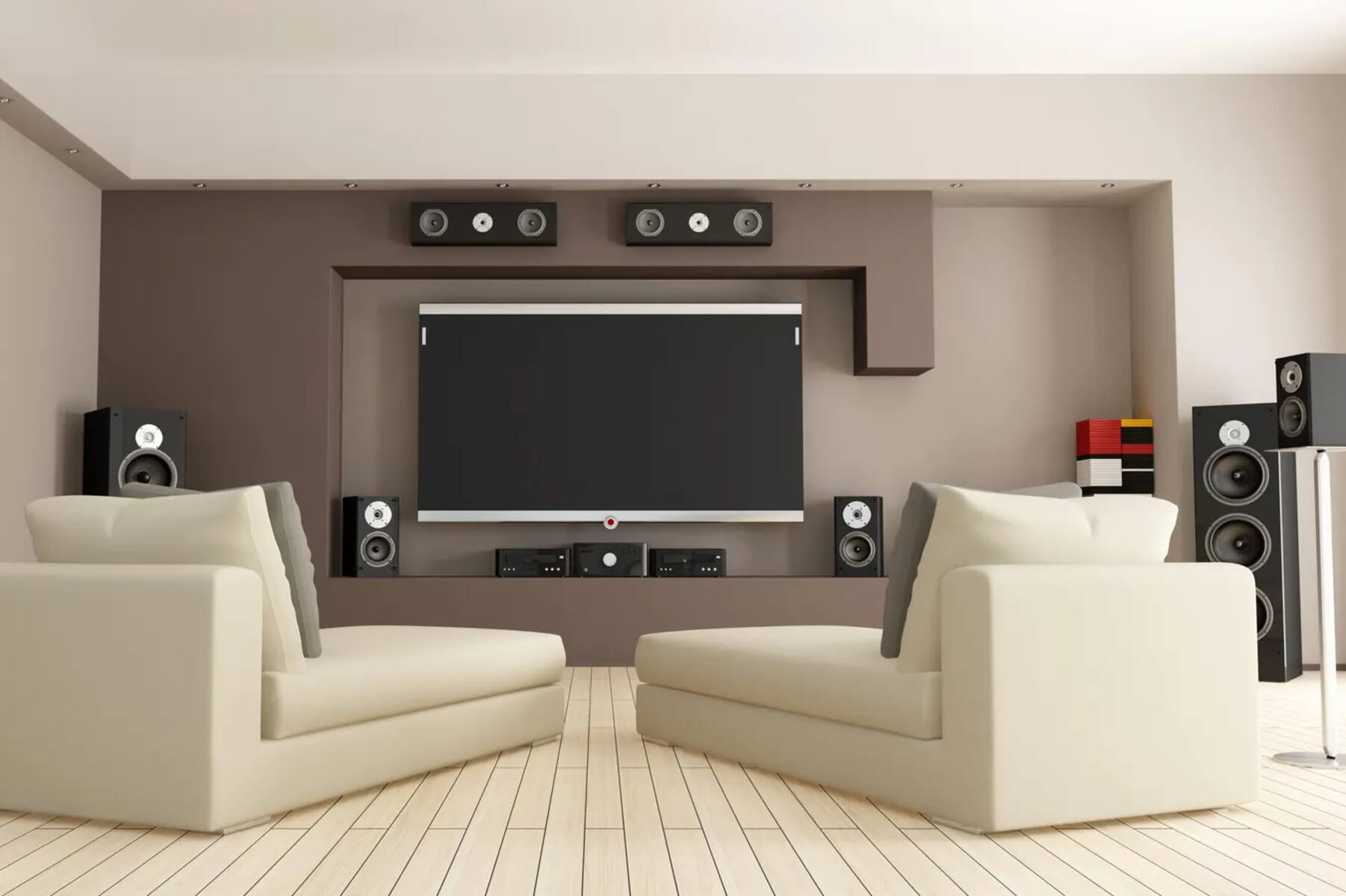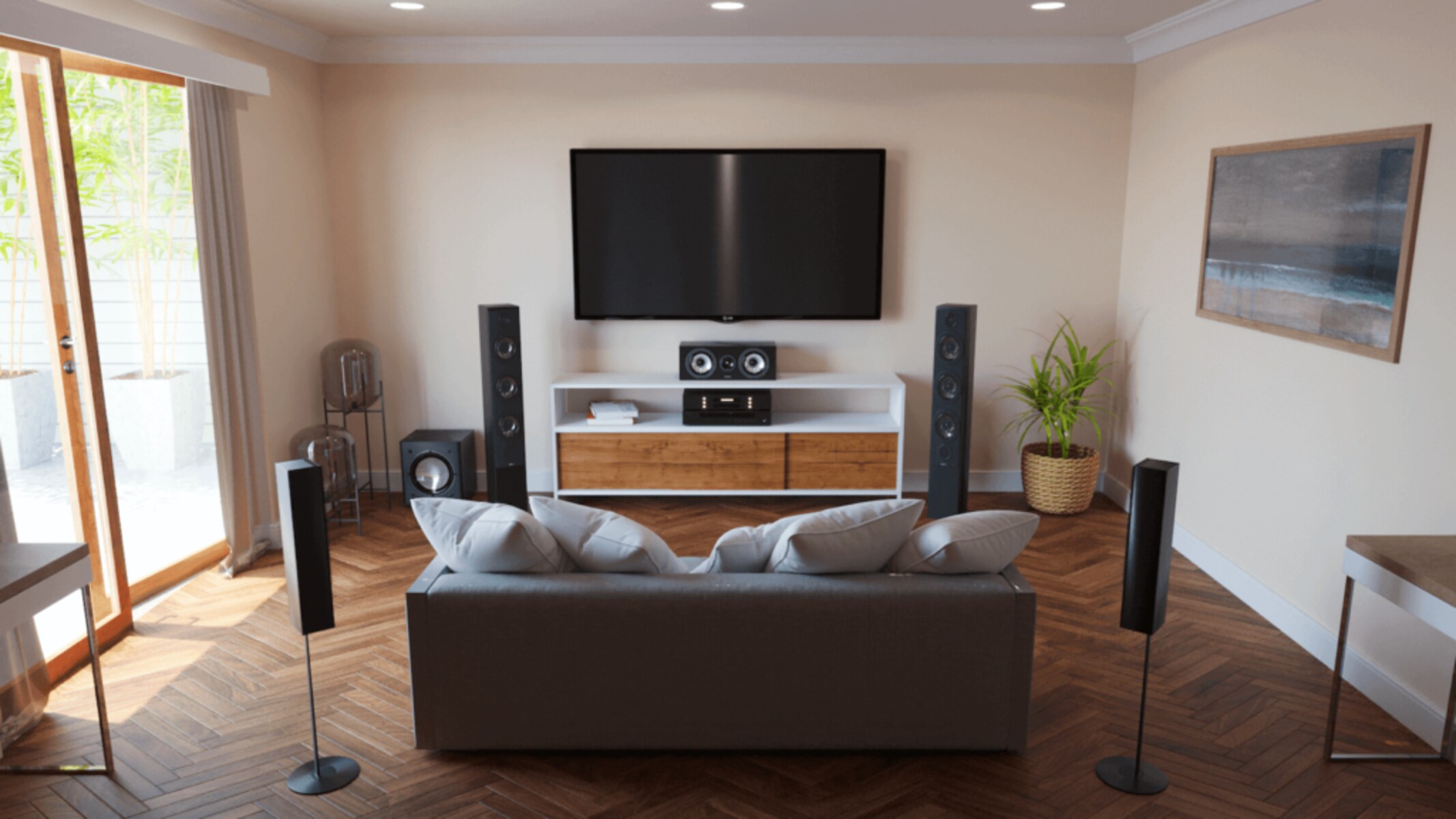Introduction
The world of audio has evolved significantly over the years, with advancements in technology enabling us to experience sound in a more immersive and realistic way. One such technology that has revolutionized the way we perceive audio is the Dolby Surround Sound system. Whether you’re watching a movie, playing video games, or listening to music, Dolby Surround Sound elevates the audio experience to a whole new level. But have you ever wondered how many channels are in a Dolby Surround Sound system?
In this article, we will explore the various channels that make up a Dolby Surround Sound system and understand their roles in creating a captivating audio experience. Whether you’re a tech enthusiast or simply curious about the inner workings of audio systems, this article will provide you with the essential knowledge to appreciate the intricacies of Dolby Surround Sound.
We will delve into the different types of channels, including front channels, center channel, surround channels, and the subwoofer channel. Additionally, we will touch upon the additional channels found in Dolby Atmos, a groundbreaking technology that further enhances the audio immersion. So, let’s dive in and discover the world of channels in a Dolby Surround Sound system.
What is Dolby Surround Sound System?
Dolby Surround Sound is a sophisticated audio technology that aims to recreate a multi-dimensional sound experience in the comfort of your own home or in a theater. It was first introduced by Dolby Laboratories in the early 1980s and has since become a standard in the audio industry. The main objective of Dolby Surround Sound is to immerse the listener in a realistic and dynamic audio environment that enhances their overall entertainment experience.
Unlike traditional stereo sound, which only utilizes two audio channels, Dolby Surround Sound system utilizes multiple channels to create a more three-dimensional soundstage. This allows for more precise placement and movement of sounds, providing a realistic and immersive experience. By strategically placing speakers around the listener, Dolby Surround Sound can reproduce the sound as it was intended, making you feel like you are a part of the action.
A key component of Dolby Surround Sound is the concept of channels. In audio terminology, a channel refers to an independent audio track that carries specific information, such as dialogue, music, or sound effects. Each channel is played through a separate loudspeaker, and the arrangement and number of channels determine the overall audio experience.
The standard configuration of a Dolby Surround Sound system typically includes five channels and one subwoofer, commonly referred to as 5.1 surround sound. The five channels consist of three front channels: left, center, and right, and two surround channels: left surround and right surround. The subwoofer channel is responsible for reproducing low-frequency sounds, such as deep bass and rumbling effects.
By utilizing these multiple channels, Dolby Surround Sound can create a realistic audio environment, where sounds can be localized and moved around the listener’s space. This creates a more immersive experience that brings the audio to life, enhancing the overall impact of your favorite movies, games, and music.
Now that we have a basic understanding of what a Dolby Surround Sound system is, let’s explore the different channels in more detail in the following sections.
Understanding Channels in Dolby Surround Sound System
To fully appreciate the immersive audio experience provided by a Dolby Surround Sound system, it is essential to understand the role and placement of each channel. Let’s explore the different channels that make up this audio technology:
Front Channels: The front channels consist of three speakers: the left, center, and right channels. The left and right channels are responsible for most of the audio content in movies, music, and video games. They help create a balanced stereo image by providing directional and spatial cues. The center channel, on the other hand, plays a crucial role in reproducing dialogue and other important sounds that are typically anchored to the center of the screen.
Surround Channels: The surround channels, also known as the surround soundfield, include two speakers: the left surround and right surround channels. These channels are responsible for creating the immersive surround sound experience by reproducing ambient sounds, background effects, and directional cues. They enhance the sense of depth and location, making the audio feel more engaging and lifelike.
Subwoofer Channel: The subwoofer channel, often referred to as the “.1” in 5.1 surround sound, is dedicated to reproducing low-frequency sounds. Its primary purpose is to deliver deep bass notes and rumbling effects that add a sense of depth and impact to the overall audio experience. The subwoofer enhances the cinematic impact during explosive action scenes, intensifies the emotions in music, and provides a thrilling sensation during gameplay.
Together, these front, surround, and subwoofer channels in a Dolby Surround Sound system work harmoniously to create an immersive and realistic audio environment. The careful placement and distribution of sounds across these channels allow the listener to hear the audio as if it were happening all around them, bringing movies, music, and games to life.
In the next sections, we will dive deeper into each channel, exploring their specific characteristics and the crucial role they play in delivering exceptional audio experiences.
Front Channels
The front channels are a fundamental component of a Dolby Surround Sound system, consisting of three speakers: the left, center, and right channels. Together, they play a vital role in creating a balanced and immersive audio experience.
Left and Right Channels: The left and right channels are responsible for delivering most of the audio content in movies, music, and games. They help create a stereo image by providing directional and spatial cues. When a sound is meant to be heard from a specific direction, it is distributed between the left and right speakers. This creates a sense of width and depth, allowing the listener to perceive sound coming from different parts of the scene. For example, if there’s a car approaching from the left side of the screen, the sound will be predominantly played through the left speaker, creating a realistic audio perception.
Center Channel: The center channel plays a crucial role in reproducing clear and intelligible dialogue, as well as other important sounds that are typically anchored to the center of the screen. In movies, it ensures that dialogue is precisely positioned, making it seem like it’s coming directly from the actors’ mouths. The center channel also handles essential sound effects that are central to the scene, providing a focused and immersive audio experience. Without a well-balanced center channel, dialogue can sound muffled or unbalanced, detracting from the overall audio quality.
The front channels of a Dolby Surround Sound system work together to create an enhanced sense of realism and immersion. When properly configured and calibrated, the front channels optimize the spatial localization of sound, making the audio experience highly engaging and enjoyable.
In the next section, we will explore the center channel in more detail, understanding its specific characteristics and its contribution to a rich and immersive audio experience.
Center Channel
The center channel is a critical component of a Dolby Surround Sound system, playing a crucial role in delivering clear and intelligible dialogue, as well as anchoring important sounds to the center of the screen. Its main purpose is to ensure that dialogue is accurately positioned and that key audio elements are precisely reproduced.
When watching a movie or TV show, the center channel carries most of the dialogue, allowing viewers to hear the characters’ conversations with clarity. The center speaker is typically positioned above or below the screen, aligned with the display. This placement ensures that the dialogue directly emanates from the center of the screen, creating a more immersive and realistic experience. The center channel eliminates the need for viewers to strain their ears or struggle to understand dialogue that may otherwise be overwhelmed by other sound elements.
In addition to dialogue, the center channel also reproduces essential sounds that are integral to a scene. For example, it may handle the sounds of footsteps approaching or a key object being revealed in a suspenseful moment. By anchoring these sounds to the center of the audio field, the center channel adds a sense of focus and directionality to the overall sound experience.
Proper calibration and careful positioning of the center channel are crucial to achieving seamless integration with the other speakers in the surround sound system. The balance between the left, right, and center channels ensures a cohesive and natural soundstage, allowing the listener to feel immersed in the audio environment. It is important to note that while the left and right channels contribute to the width and spatial characteristics of the audio, the center channel provides critical stability and precision to the overall mix.
Overall, the center channel is an essential component of a Dolby Surround Sound system, delivering clear dialogue and anchoring important sounds to the center of the screen. Its role in maintaining audio coherence and ensuring intelligibility cannot be understated. When properly set up, the center channel enhances the overall audio experience, immersing the viewer in a captivating and realistic sound environment.
In the following section, we will explore the surround channels, further enhancing the three-dimensional audio experience provided by a Dolby Surround Sound system.
Surround Channels
The surround channels are a vital component of a Dolby Surround Sound system, responsible for creating immersive audio experiences by reproducing ambient sounds, background effects, and directional cues. By strategically placing speakers behind the listener, the surround channels enhance the sense of depth and location, making the audio feel more engaging and lifelike.
There are typically two surround channels in a Dolby Surround Sound setup: the left surround and right surround channels. These speakers are positioned on either side of the listener, slightly behind and to the left and right, respectively. This placement allows for a more enveloping sound experience, simulating sounds originating from the sides or rear of the listener.
The surround channels play a critical role in creating a realistic audio environment. They bring the listener closer to the action by reproducing sounds that are meant to be experienced from specific directions. For example, in an action movie, the sounds of bullets whizzing past or a car zooming by can be precisely positioned in the surround soundfield, giving the listener an immersive sense of being right in the midst of the scene.
In addition to directional cues, the surround channels also contribute to the overall ambience and atmosphere of a movie or music. They reproduce background effects, such as rain falling or birds chirping, to enhance the sense of being in a particular environment. These elements help create a more lifelike sound experience, transporting the listener to different worlds or settings.
Proper calibration and placement of the surround channels are essential to achieving accurate and seamless sound localization. When calibrated correctly, these channels work in harmony with the other speakers to create a cohesive soundscape that envelops the listener. The balance between the front, surround, and center channels ensures a balanced and immersive audio experience where sounds move fluidly around the listener.
Overall, the surround channels in a Dolby Surround Sound system are essential for creating a three-dimensional audio experience. By reproducing ambient sounds, background effects, and directional cues, they enhance the immersion and realism of the audio, allowing you to feel fully engaged and connected to the content you are experiencing.
In the next section, we will explore the subwoofer channel, which adds depth and impact to the overall audio experience.
Subwoofer Channel
The subwoofer channel is a crucial component of a Dolby Surround Sound system, responsible for reproducing low-frequency sounds that add depth and impact to the overall audio experience. The subwoofer specializes in handling deep bass notes, rumbling effects, and powerful low-end sound effects, enhancing the cinematic impact of movies, music, and games.
Unlike the other channels in a surround sound system, which are typically full-range speakers, the subwoofer is a dedicated speaker designed to produce low-frequency sounds. These sounds, often referred to as sub-bass frequencies, cannot be effectively reproduced by regular speakers due to their larger wavelengths. The subwoofer, with its specially designed driver and enclosure, is optimized to handle these low frequencies with precision and power.
The subwoofer channel provides a tangible physical sensation, adding a visceral punch to explosive action scenes, music with deep basslines, and sound effects that require a significant low-frequency impact. It is responsible for reproducing the rumbling sound of thunder, the reverberation of explosions, or the deep resonance of a musical instrument’s lowest notes. The subwoofer channel intensifies the emotions and enhances the overall sonic experience by creating a rich and immersive audio environment.
When properly calibrated and integrated with the other channels, the subwoofer seamlessly blends the low-frequency content, complementing the mid and high-frequency sounds from the other speakers. This cohesion ensures a balanced audio experience where every element of the sound spectrum is accurately reproduced. Adjusting the subwoofer’s output level allows for customization based on personal preferences and room acoustics.
It’s worth noting that the placement of the subwoofer is flexible and can be positioned anywhere in the room. Low-frequency sounds are non-directional, meaning that our ears have difficulty perceiving the exact source of the sub-bass frequencies. Experimentation with subwoofer placement can help achieve the best bass response and optimal integration with the other speakers.
In summary, the subwoofer channel in a Dolby Surround Sound system is responsible for delivering deep bass notes and rumbling effects that add depth, impact, and an immersive element to the overall audio experience. With its specialized design and powerful capabilities, the subwoofer enhances the cinematic impact, intensifies musical enjoyment, and immerses listeners in a thrilling sonic environment.
In the next section, we will explore the additional channels offered by Dolby Atmos, taking audio immersion to the next level.
Additional Channels in Dolby Atmos
Dolby Atmos takes the immersive audio experience to new heights by introducing additional channels that go beyond the traditional 5.1 or 7.1 surround sound setups. Dolby Atmos introduces object-based audio, allowing sound engineers to precisely position and move individual sounds in a three-dimensional space. This enables a more accurate representation of sound sources, creating a truly immersive audio environment.
In addition to the front, center, surround, and subwoofer channels found in traditional surround sound setups, Dolby Atmos introduces additional channels for height and overhead effects. These channels, known as overhead speakers or height speakers, add a vertical dimension to the audio field, making sound come from above as well as around the listener.
The overhead speakers are strategically positioned above the listener, either on the ceiling or mounted high on the walls. These speakers provide a sense of height and depth, allowing sound to move from the front to a location above and around the listener. This enhances the realism and immersion of the audio experience, making it feel as if the sound is coming from all directions, including above.
With Dolby Atmos, sound engineers have precise control over each sound object in the audio mix. They can assign sounds to specific locations in the three-dimensional space, making them move seamlessly between speakers. This level of audio precision brings a new level of realism and detail to movies, music, and video games, creating a more captivating and enveloping audio experience.
It’s important to note that to experience the full capabilities of Dolby Atmos, a compatible audio setup is required. This typically involves additional height or overhead speakers, as well as a compatible AV receiver or soundbar that supports Dolby Atmos decoding.
By expanding the number of channels and introducing height and overhead speakers, Dolby Atmos allows for a more immersive and lifelike audio experience. It brings sound alive from all directions, surrounding the listener with a multidimensional sonic environment.
In the following sections, we will explore the overall impact of these channels and how Dolby Atmos enhances the audio immersion and entertainment experience.
Conclusion
The channels in a Dolby Surround Sound system play a crucial role in creating an immersive and captivating audio experience. From the front channels that provide directional cues and clear dialogue, to the surround channels that enhance the sense of depth and location, each channel contributes to a lifelike audio environment. The subwoofer channel adds depth and impact with its ability to reproduce low-frequency sounds, while Dolby Atmos takes the audio immersion to another level with its additional channels for height and overhead effects.
By understanding the different channels and their specific roles, you can appreciate the intricate design and engineering behind Dolby Surround Sound systems. Proper calibration, speaker placement, and integration of these channels are key to achieving a seamless and realistic audio experience that enhances your enjoyment of movies, music, and games.
Whether you’re watching an action-packed movie, playing your favorite video game, or enjoying a concert recording, a well-configured Dolby Surround Sound system can transport you into a world of immersive audio. The precise distribution and localization of sound across the channels make you feel like you’re a part of the action, creating a more engaging and emotionally impactful entertainment experience.
As technology continues to advance, the boundaries of audio realism will be pushed further. Dolby continues to innovate with technologies like Dolby Atmos, bringing even more depth, precision, and immersion to the audio experience. With each advancement, we get closer to the goal of creating soundscapes that truly transport us into another dimension.
So, the next time you sit down to watch a movie, play a game, or listen to music, take a moment to appreciate the artistry and engineering behind the channels in a Dolby Surround Sound system. Let the sound envelop you, creating a rich and immersive audio experience that enhances your enjoyment and brings your entertainment to life.







